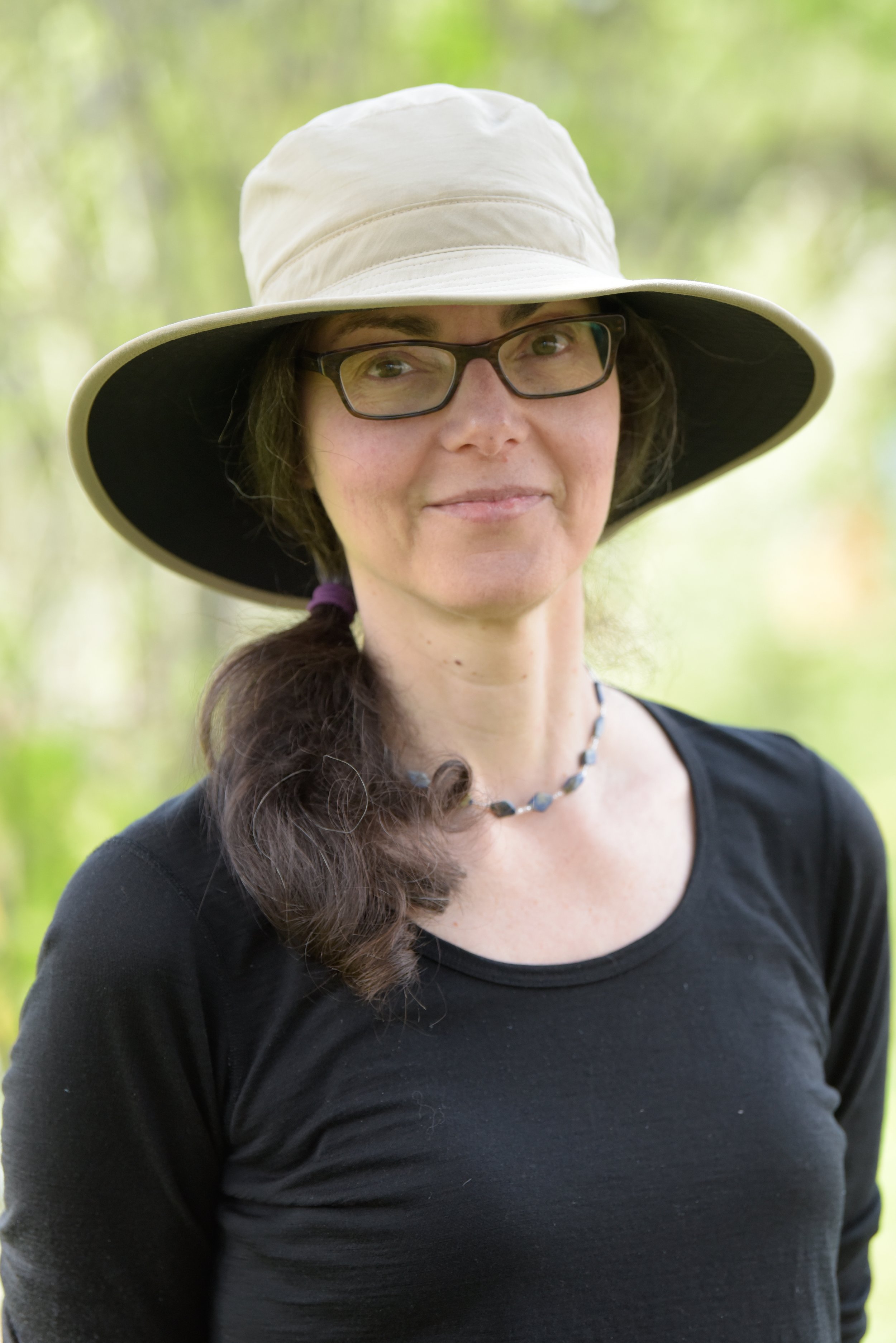Rochelle Greayer BIO
Rochelle Greayer is the current editor of The American Gardener magazine for the American Horticultural Society and a garden designer, writer, and the creative force behind Pith + Vigor, a literary newspaper and online magazine for garden enthusiasts. She is the author of Cultivating Garden Style, a rich book that blends design guidance with inspiration, and has co-authored The Essential Garden Design Workbook and The Garden Makers Manual. Rochelle also founded the acclaimed blog Studio G, co-founded Leaf Magazine, and contributed a long-running garden column for Apartment Therapy.
A graduate of the English Gardening School in London, Rochelle has designed gardens for private residences and hotels across the globe since 2002. Before her horticultural career, she was a literal rocket scientist where she worked in aerospace and software engineering, helping launch Russia’s first commercial satellite and riding in the cockpits of F-14s and F-18s. Though she didn’t make it to space, she likes to say her fingerprints did. Rochelle brings both scientific curiosity and creative flair to everything she does. Learn more about the American Horticultural Society, including The American Gardener magazine and free admission to over 400 gardens, at ahsgardening.org and Rochelle at her website pithandvigor.com.
SHOW NOTES
Rochelle traces her plant passion back to childhood summers gardening with grandparents in Colorado and Montana
How visiting the Chelsea Flower Show and seeing the energy and designs convinced her to pursue a profession in horticulture
Her lifelong interest in design and architecture, influenced by her father’s civil engineering firm and early fascination with markers and drawing tables
How Rochelle pivoted from aerospace to landscape design while living in England and highlighting how welcoming the green industry is
Emphasizes science and experimentation as her core approach to horticulture
A personal example, an old blog post on strawberry ripening, to illustrate how garden myths persist online and the importance of firsthand observation
The myth of planting trees in square holes and scientific debunking through data and logic
Critiques how horticulture often relies on lore and myths instead of research, using bell pepper gender myths as an example
Non-native congeneric trees are poor-quality host plants for a larval Lepidopteran
The need for nuance in interpreting scientific studies and resisting over-extrapolation from limited research
How people crave black-and-white answers in gardening, but the reality is often gray and complex
The origin story of Pith + Vigor, from a personal blog for cataloging design materials to a vibrant online magazine and teaching platform
The evolution from digital magazines to the tactile vision for a garden newspaper with a strong aesthetic identity
Advice for gardeners to uncover their authentic garden style by rapidly liking images on Pinterest or Instagram to bypass critical thinking
Designer tricks like drawing on paper and visual brainstorming to remove real-world constraints
How storytelling can guide garden design by incorporating personal history and memories
Rochelle’s childhood love of rhubarb and the struggle to grow it in New England as an evolving design narrative
Advocating for designing beds and gardens around what works on your site, even if it breaks traditional design rules
How using stories about people, family, childhood, and place give gardens emotional resonance
Describes how garden stories can include historic elements like stone walls, natural features, or even ancient cultural alignments
How gardens reflect not just personal history but also ecological and cultural narratives of the land
Rochelle’s editorial vision for The American Gardener magazine: to bring surprise, delight, and joy to every page
Goals to expand the magazine’s reach by appealing to a more diverse and modern audience, similar to British gardening publications
Redesigning the magazine with more color, creativity, and varied layouts to reflect community and inspiration
Encouraging writers to embrace their personal voice and stories to make garden writing engaging in an AI-driven future
Using AI as a tool to handle evergreen content to allow human creativity to shine in more meaningful storytelling
How garden writing must be infused with lived experience, emotion, and human connection to stay relevant
An example from a botanic garden that used AI to personalize communication for different audience personas
How to use AI to test thinking and challenge assumptions and for synthesizing feedback and identifying themes in audience responses
Using the VoicePal app to dictate thoughts while walking and receive AI-generated reflection questions
How the magazine redesign also aims to make AHS more appealing to younger and more diverse gardeners
Managing creative projects by using systems and constantly testing new tools and automations to stay organized and reduce workload
Rochelle’s use of the Notes app across all devices to capture ideas quickly before they disappear
The simple but powerful routine of writing everything down even in mid-conversation to ensure creative follow-through
Yotam Ottolenghi and Nigella Lawson cookbooks as her favorites, praising their creativity, deliciousness, and personal storytelling
How horticulturists should seek inspiration outside their field for fresh ideas
How to propagate more horticulturists by kids gardening with adults and realizing that landscape professionals are uniquely positioned to tackle major global issues like climate change and food systems
Learn more about the American Horticultural Society, including The American Gardener magazine and free admission to over 400 gardens, at ahsgardening.org and Rochelle at her website pithandvigor.com.















